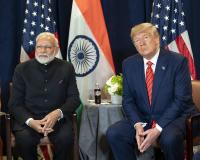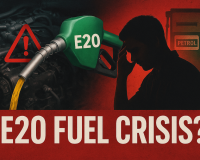- Editorial
- Editorial: Ethanol Blending – A Good Idea, Poorly Executed
Editorial: Ethanol Blending – A Good Idea, Poorly Executed

By Rajesh Warlekar
India is facing a major transition in its fuel policy, but instead of smooth change, what’s unfolding is confusion, silence from authorities, and rising frustration among vehicle owners. The government’s push for E20 fuel petrol blended with 20% ethanol is being hailed as a leap towards energy independence and savings on crude oil imports. But for lakhs of vehicle owners, especially those who bought cars before April 2023, it’s starting to look like a mechanical and financial nightmare.
Let’s be clear: The intent behind the E20 policy is commendable. Reducing fossil fuel dependence, empowering farmers, and saving foreign exchange are all noble goals. But the way this transition has been executed hastily, without public consultation or adequate consumer information reveals the same pattern India has seen before in policies like GST and demonetisation. A good idea, derailed by poor planning.
Until recently, India was using E10 petrol with 10% ethanol without significant issues. But in a surprising move, the government accelerated its timeline and rolled out E20 fuel five years ahead of schedule. Now, there’s talk of moving to E27 or even E30. Yet, there is little clarity about how this will affect the country’s vast fleet of older vehicles, most of which were not designed to run on such high ethanol blends.
Here’s the catch: Fully E20 compatible engines are being manufactured only from 2025. Vehicles made between 2023 and 2025 are “material compliant” meaning they won’t corrode as easily, but even these aren’t always fully performance-tuned for E20. Everything made before April 2023? At risk.
Already, reports are surfacing of engine knocking, injector failures, reduced mileage, and performance dips. Insurance companies and auto manufacturers are issuing advisories. Fuel companies aren’t labeling pumps clearly. Car owners are left confused even misled.
In Brazil, often cited as a model for ethanol blending, things were done differently. The transition took decades. People had a choice flex-fuel cars were introduced early, fuel types were clearly labeled, and prices were subsidised. In India, there’s no choice no option to choose E10 or E20 at the pump. The government simply changed the fuel supply without informing the public, and now consumers must adapt, whether their engines can or not.
This rollout has created a serious information vacuum. Car manuals often warn against using blends beyond E10 in non-compliant engines. Insurance policies may not cover damage caused by E20. And yet, there's no public awareness campaign, no labeling at petrol pumps, and little industry pushback likely due to fear of regulatory retaliation.
The government claims the ethanol push benefits farmers, reduces pollution, and saves foreign exchange. But if the consumer sees no fuel price drop, no performance benefit, and instead bears repair costs and reduced vehicle lifespan, then who exactly is gaining?
To make matters murkier, concerns have been raised about possible conflicts of interest particularly regarding the sugar industry, where many ethanol producers are linked to powerful political players. Allegations have surfaced about sugar lobby influence, but instead of transparency, the government is responding with aggression and dismissal, labeling critics as part of a petrol lobby conspiracy.
What’s most worrying is the absence of democratic choice. In a true democracy, citizens should be informed, consulted, and offered options especially when government policies affect their private property. Today, India’s middle class is being forced to use an untested fuel blend, without warning or alternative. And when questions are asked, the response is deflection, silence, or threats.
What could have been a model policy for green energy is quickly becoming a case study in mismanagement. Yes, ethanol is the future. Yes, energy independence matters. But public trust cannot be collateral damage in the name of speed. We need phased transitions, informed citizens, clear labeling, fuel flexibility, and transparency on cost and impact.
This is not a call to stop ethanol blending. It’s a call to do it right. Because if the government won’t slow down, the vehicles might stranded on roads, protesting not with slogans, but with seized engines.
Ten Questions the Government Must Answer:
-
Why was E20 implemented without clear public communication?
-
What protections exist for owners of pre-2023 vehicles?
-
Will insurance cover engine damage caused by E20?
-
Why is there no price relief for blended fuel?
-
Why are fuel pumps not clearly labeling ethanol content?
-
Why weren’t flex-fuel vehicles introduced earlier?
-
Why was this transition rushed five years ahead of schedule?
-
Is there a conflict of interest due to links with sugar lobbies?
-
What support will be provided to consumers facing engine damage?
-
Why are vehicle manufacturers silent despite clear risks?
Until these questions are answered honestly and publicly, the ethanol transition will remain a symbol of policy overreach with the middle class paying the price.
000











